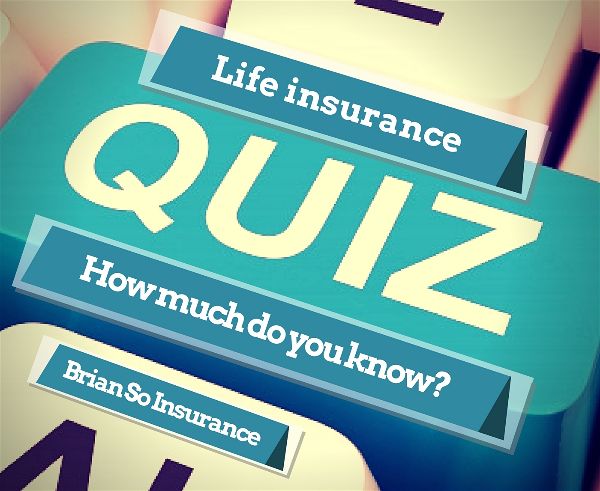
As part of the mandate of Life Insurance Awareness Month to raise awareness for all things related to life insurance, we want to do our part to educate our readers on the different aspects of life insurance. There aren’t many better ways of education than a knowledge test. Therefore, below is a short quiz on life insurance. Since the purpose of the month is awareness and not about passing the LLQP, the questions will be geared towards beginners.
The answers for the seven questions below are at the bottom of the post, so don’t scroll too fast!
Questions
1. What is the goal of life insurance?
a) To make your beneficiaries wealthy
b) Financial security for your family
c) To pay for emergency medical expenses
2. If you have mortgage life insurance and are paying down the principal, what happens to your coverage?
a) It remains the same
b) It decreases
c) It increases
3. Your life insurance needs is a factor of what?
a) Existing life insurance, income needs and immediate cash needs
b) Number of beneficiaries
c) Your age, gender and smoking status
4. At the renewal of a term insurance policy:
a) You have to qualify again medically to continue coverage
b) Coverage ends immediately
c) You have to pay the increased rate to continue coverage
5. Which of the following demographics have the highest need for life insurance?
a) Children with health issues
b) Seniors without debt
c) Working class with dependents
6. Which of the following is not required for a life insurance claim?
a) A letter from the beneficiary
b) A claim form
c) The death certificate
7. Which of the following factors are likely to increase your insurance premiums?
a) Being healthy
b) Being male
c) Being young
Answers
1. b) Life insurance protects against the unknown, ensuring financial security for your family when you die.
2. b) Your coverage decreases at the same rate you pay off the principal of your mortgage, so you are receiving a lower benefit for the same amount of premium. Here are other reasons to avoid mortgage life insurance.
3. a) Your life insurance needs depend on how much income you want to provide for your beneficiaries and for how long, how much you require for funeral expenses, education funds, and to pay off outstanding debts. Your existing life insurance coverage is subtracted from all of this to determine your current life insurance needs.
4. c) At the renewal of a term insurance policy, rates will increase to reflect the higher risk you represent. To continue coverage, you must accept the new rates.
5. c) A working class individual with a family dependent on his income has the highest need for life insurance, since his passing will cause a financial catastrophe for the entire family.
6. a) The death certificate is proof that the life insured is deceased, while the claim form serves to outline the claim by the beneficiary.
7. b) Men have a lower life expectancy than women. To compensate for the higher risk of insuring men, insurance companies charge a higher premium.
How did you do? Did you get 7 out of 7? Don’t worry if you didn’t get a perfect score, as even some professionals in the financial services and insurance industry may get 1 or 2 wrong. If you have a basic knowledge of life insurance, you should be able to get most of them correct. Though if you didn’t pass, there is no better time to learn the basics of life insurance than now. With many resources online from insurance companies such as Sun Life and Manulife, to non-profit organizations such as the Canadian Life and Health Insurance Association, there is no excuse for remaining in the dark about life insurance.
Image courtesy of Stuart Miles at FreeDigitalPhotos.net

